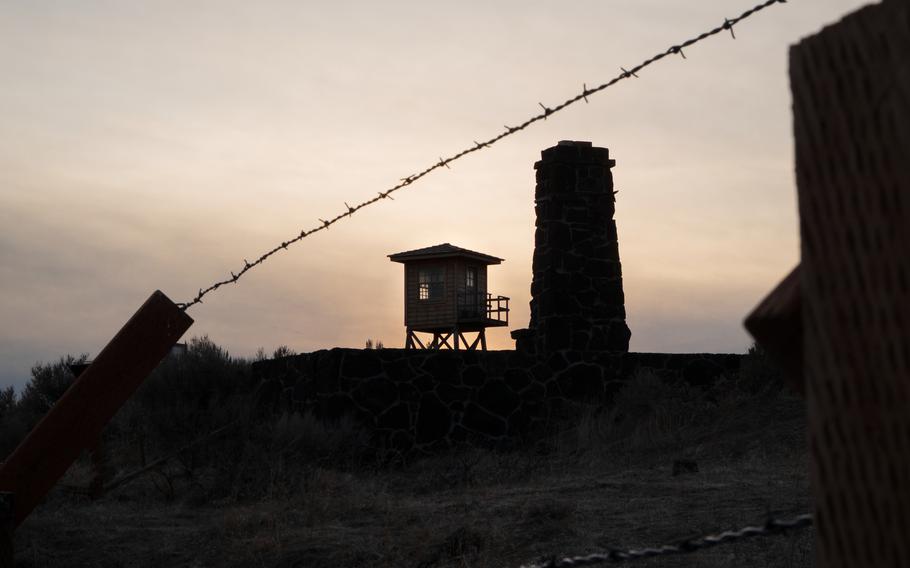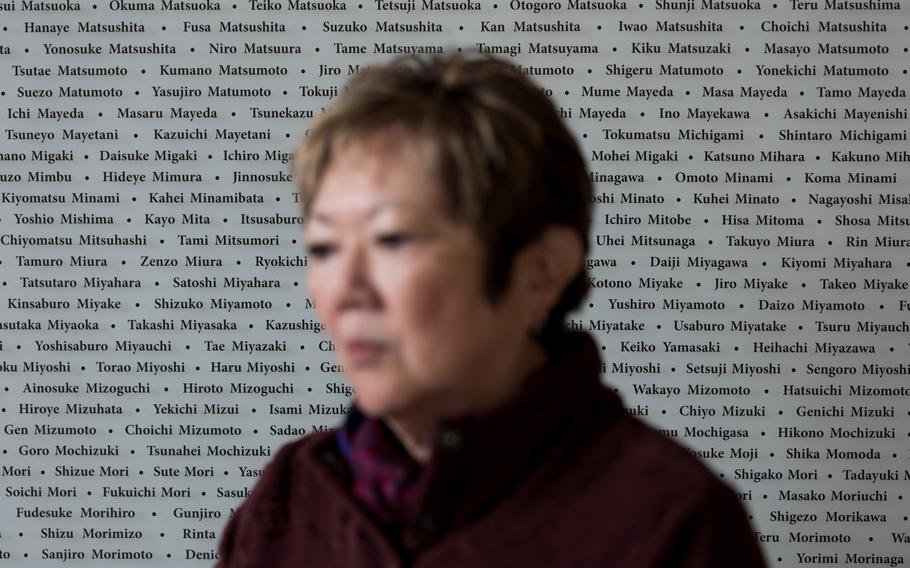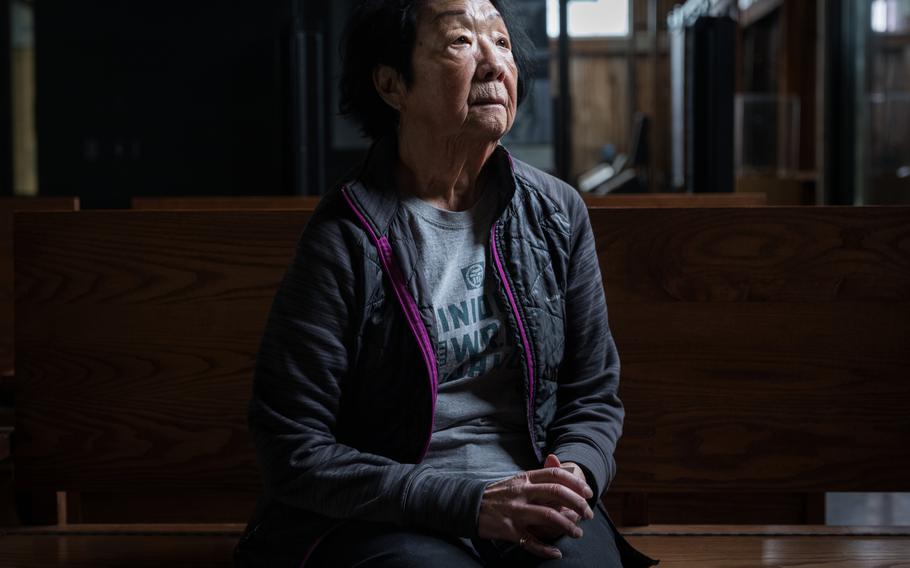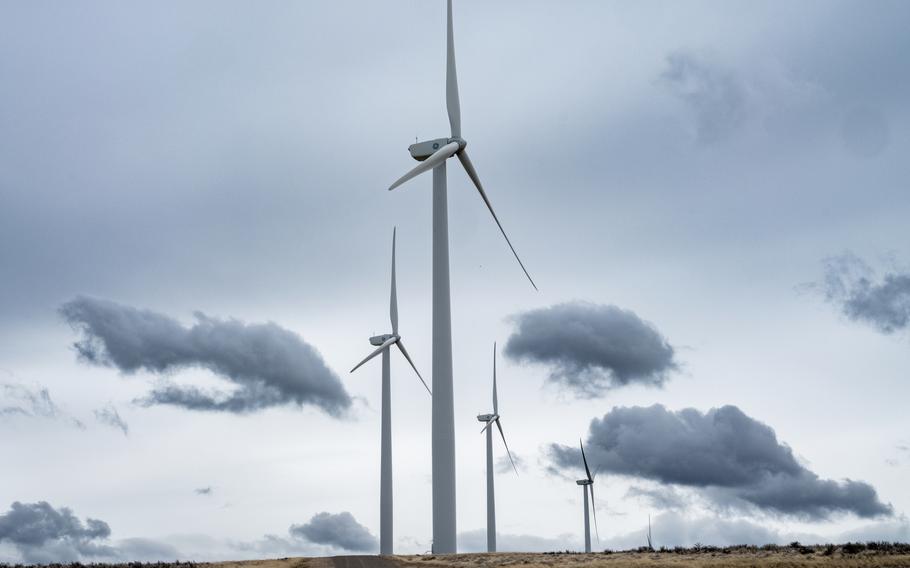
The Minidoka National Historic Site, where more than 13,000 Japanese Americans were imprisoned at the Minidoka War Relocation Center between 1942 and 1945, in Jerome, Idaho, on April 20, 2023. MUST CREDIT: Photo for The Washington Post by Jared Ragland (Jared Ragland)
JEROME COUNTY, Idaho - This rural, wind-swept basin carpeted with golden grass and littered with dark lava rock is the kind of spot the Biden administration sees as the future of energy in America.
Close to high-voltage transmission corridors, it's well situated for installing a massive wind farm to feed the nation's growing need for renewable power.
But this stretch of sagebrush country in southern Idaho, where a developer is proposing to erect hundreds of windmills, is also the site of one of the darkest chapters of America's past, where thousands of Japanese Americans were unjustly imprisoned during World War II.
"I understand the climate crisis," said Janet Matsuoka Keegan, a descendant of incarcerees who opposes the wind project. But President Biden's renewable energy push, she added, is "not well thought-out."

Janet Matsuoka Keegan, a Friends of Minidoka board member, stands in front of the Issei Memorial Wall at the Minidoka National Historic Site in Jerome, Idaho, on April 21, 2023. MUST CREDIT: Photo for The Washington Post by Jared Ragland (Jared Ragland)
To wean off fossil fuels and stave off climate change, the nation needs renewable power. The Biden administration wants to run the grid entirely on clean energy by 2035, aiming to get much of that power from wind and other renewable sources on federally controlled lands and waters. Polls say most Americans want to see their electricity come from zero-emissions sources.
But finding places willing to host towering wind turbines? That's another matter.
Across the country, wind developers are generating a new wave of not-in-my-backyard opposition that threatens to stall those climate goals: from homeowners concerned about ruined views; lobstermen worried about fishing among titanic turbines; nature lovers alarmed about impacts on whales and birds and even U.S. military planners fretting about naval operations.
"The constraint isn't the resource itself," said John Hensley, vice president of research and analytics for the American Clean Power Association, a wind and solar industry group. "It's the ability to site projects in different parts of the country and then to interconnect those projects with the rest of the grid."
For many Japanese Americans, the proposed wind farm threatens to scour memories of deep suffering for the benefit of commercial interests.
"You wouldn't build a huge wind project over another concentration camp, or Gettysburg, or the Washington Monument," said Robyn Achilles, executive director of Friends of Minidoka, a nonprofit group that supports the Minidoka National Historic Site, a park in the footprint of the former incarceration camp.
"It really is a somber location."

Minidoka War Relocation Center survivor Karen Hirai Olen at the Minidoka National Historic Site in Jerome, Idaho, on April 21, 2023. MUST CREDIT: Photo for The Washington Post by Jared Ragland (Jared Ragland)
- - -
In 2022, about a tenth of the country's utility-scale electricity came from wind, more than 60 times the amount generated just two decades ago. A combination of advances in turbine technology, tax breaks for developers and private land availability drove that growth.
For years, the wind industry has prioritized development in states full of flat farmland, such as Iowa and Kansas, where it was relatively easy to pay farmers to allow turbines on their property.
Yet local anti-wind ordinances and other opposition still led to rejections or restrictions for at least 376 wind projects from Maine to Hawaii since 2015, according to Renewable Rejection Database.
"Lots of people like the idea of wind energy but nobody wants to live in the shadow of 600-foot-high wind turbines," said Robert Bryce, author of "A Question of Power: Electricity and the Wealth of Nations" and host of "The Power Hungry Podcast," who manages the database.

Turbines at the Milner Dam wind farm in Cassia County, Idaho, on April, 21, 2023. (Jared Ragland/The Washington Post)
"Nobody wants to look at red-blinking lights all night, every night for the rest of their lives and nobody wants to put up with the noise pollution generated by those massive turbines," he added.
To meet Biden's climate goals, a lot of more renewable energy needs to come from federal lands out West, where industry representatives say the approval process is even tougher, leading to calls from some in Congress to streamline the permitting process. The Biden administration wants to get 25 gigawatts of renewable energy from BLM lands by 2025, and has approved projects representing about 37 percent of that goal.
The company behind the Idaho project, Magic Valley Energy, an affiliate of the New York-based energy firm LS Power, originally proposed to construct up to 400 wind turbines on BLM land about 2 miles northeast of Minidoka.
Under the company's initial 2020 proposal, some of the turbines would rise close to the old camp's diamond where detainees played baseball and one rickety, remaining barrack where they slept.
- - -
Two months after imperial Japan bombed Pearl Harbor, President Franklin D. Roosevelt issued the order forcibly ripping around 120,000 people of Japanese descent away from their homes and businesses on the West Coast over unfounded fears they would aid in a Japanese invasion.
Established in 1942 and in operation until 1945, Minidoka was one of the "relocation centers" - concentration camps where Japanese American citizens toiled on farms. Over those three years, about 13,000 endured blistering summers and bone-chilling winters in tar-papered barracks.
More recently, the U.S. government has sought to make amends for a forced removal widely regarded today as immoral and unconstitutional. In 1988, Ronald Reagan made a formal apology and offered each survivor $20,000 in reparations. Today, a portion of old camp is a historical site managed by the National Park Service.
At the Minidoka visitor's center, 79-year-old survivor Karen Hirai Olen pointed on a map to the camp hospital where she was born and the barracks where she spent her first months. "I remember my mom saying when they stopped at Minidoka, she thought, 'Oh, my God. What is this place?'"
The Bureau of Land Management, which manages much of the acreage around Minidoka, is reviewing the wind farm application. On a recent April morning, agency employees unfurled pictures depicting what the Lava Ridge Wind Project would look like from the historical site. A stiff wind bending the renderings made it clear why wind developers want to build nearby.
To address concerns over ruining the Minidoka visitor experience, the BLM proposed two alternative plans that would set the project away from the historical site by at least 5 miles, and reducing the number of turbines to a maximum of 378 or 269. Instead of towering near the camp, the blades would hover around the horizon under BLM's alternatives.
"I think and hope what folks see is that the preferred alternatives that we are analyzing are very different than what the company's proposal was," BLM director Tracy Stone-Manning said in an interview.
"That's the balance that we're trying to do," she added. BLM said it expects to make a final decision by next winter.
Luke Papez, Magic Valley Energy's senior director of project development, said the company wants to "ensure this project honors the survivors of Minidoka."
"We believe this is a good example of how the public process led by the BLM can lead to a compromise for all sides," he said.
The proposed modifications have not diminished the pushback from Friends of Minidoka, which says the turbines would damage a somber sense of place even from a distance and is asking the government to protect 237,000 acres around the site as an "area of critical environmental concern."
For Japanese American families, the desolate landscape locked prisoners in as much as the barbed wires and guard towers did in the 1940s. With wind turbines threatening a park experience evocative of that era, some former park officials are also pushing back against the project.
"I'm a big fan of renewable energy," said Jonathan B. Jarvis, former National Park Service director during the Obama administration. But he added "renewable energy does not get a free ride."
"In the cases of places like Minidoka, the values for which it was established extend beyond the boundaries - beyond the funny little lines that are drawn on the map."
Several Republican lawmakers in Idaho have come out against the wind project as well. In a congressional hearing Tuesday, Sen. James E. Risch (R-Idaho) pressed Interior Secretary Deb Haaland about Lava Ridge, noting his state already generates most of it energy from carbon-free hydroelectric dams.
"This land means a lot to them," Risch said of Idaho's Japanese American population.
"Don't do it."
Back at Minidoka, Keegan wept as she remembered what her country took from her family here. A floral business her grandparents lost after being forced from their homes in Seattle. A sense of community after the U.S. government split up her parents, aunts, uncles and other friends and family between this and other incarceration camps.
"When we were growing up, they didn't really talk about it," Keegan said as she sat on a wooden bench in the visitor's center.
Through tears, she added: "It was really hard."